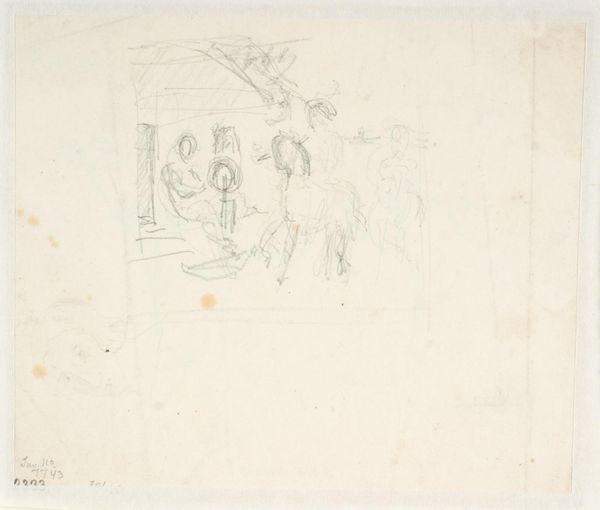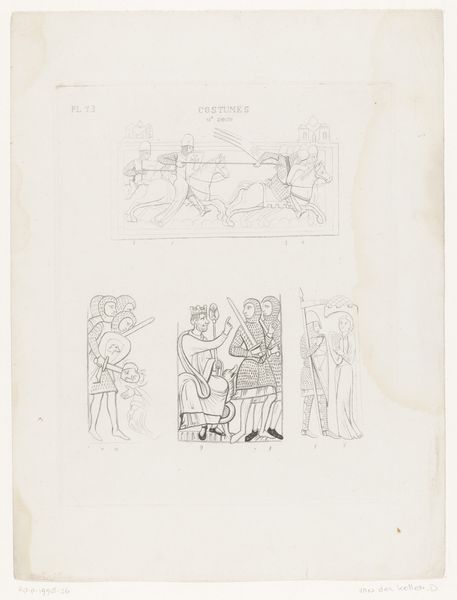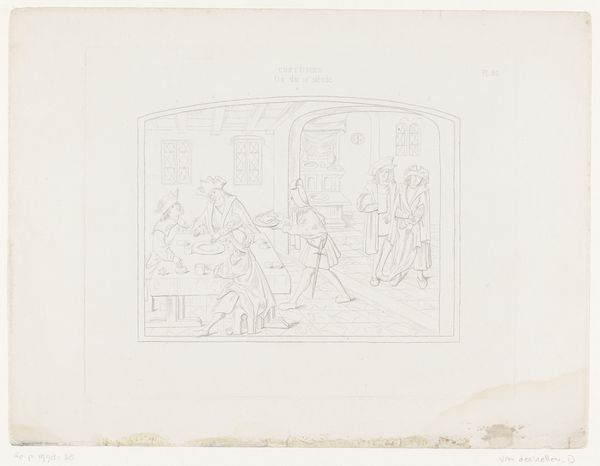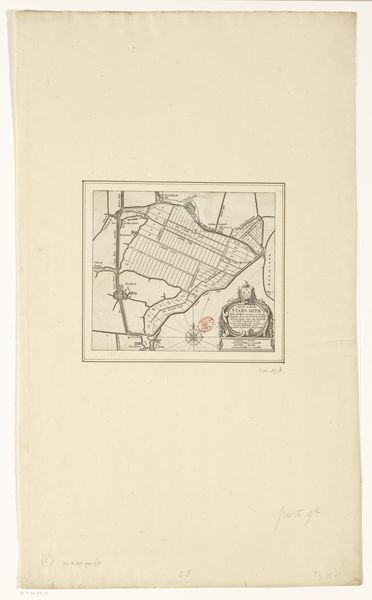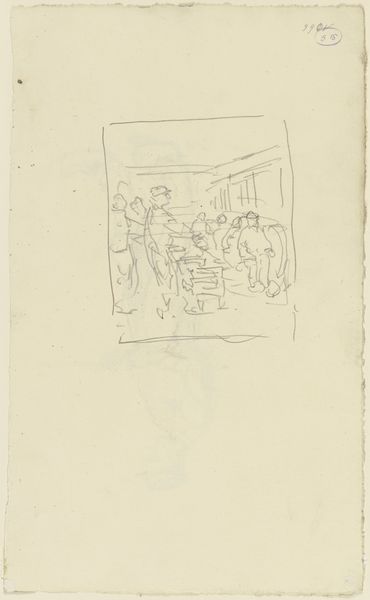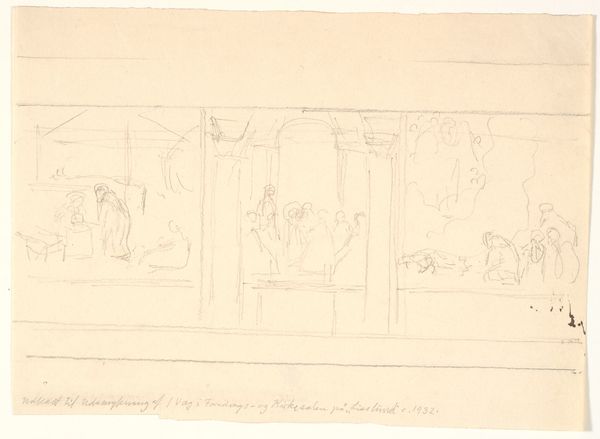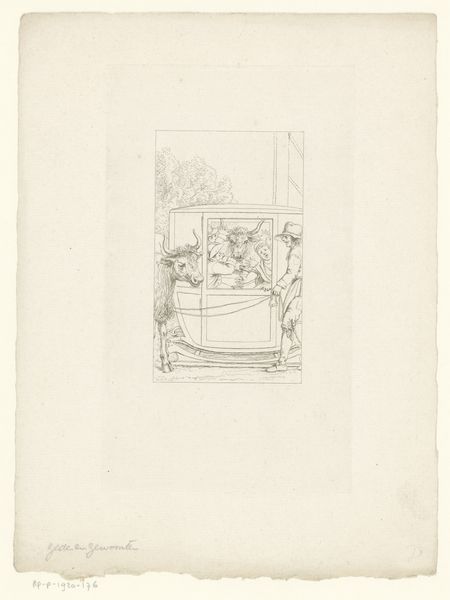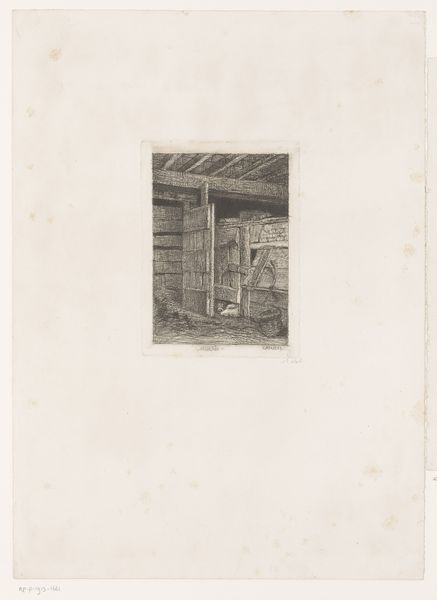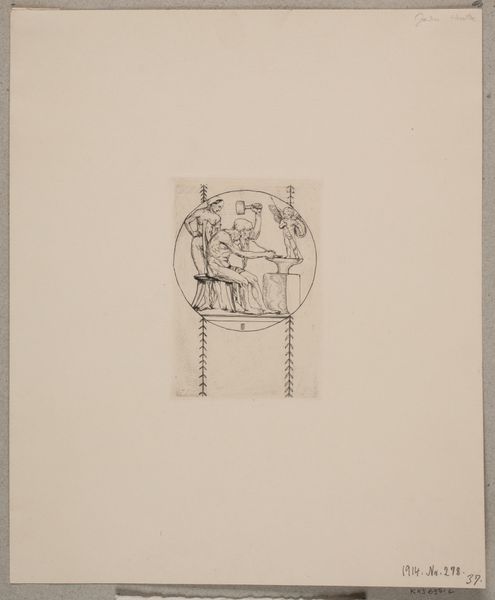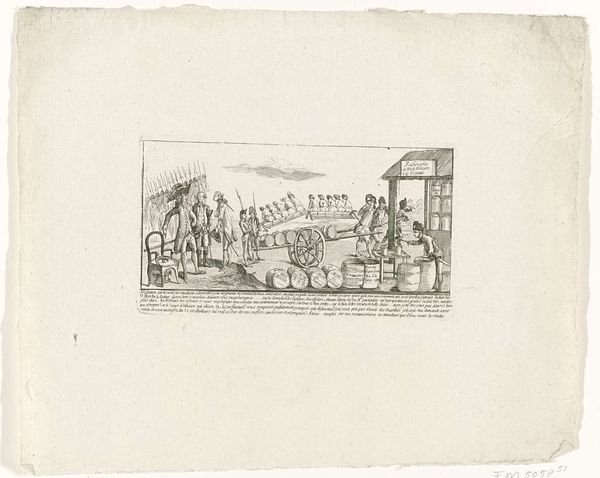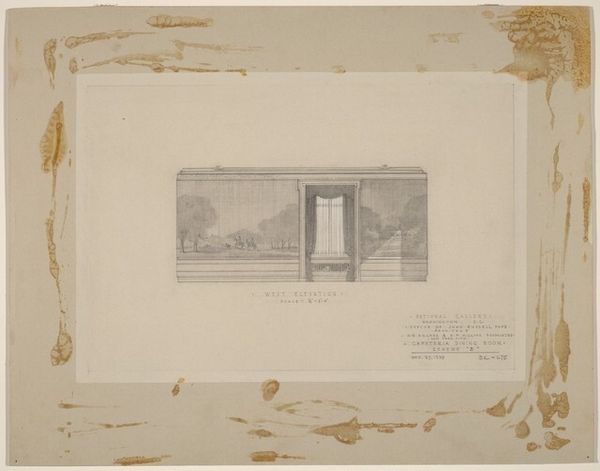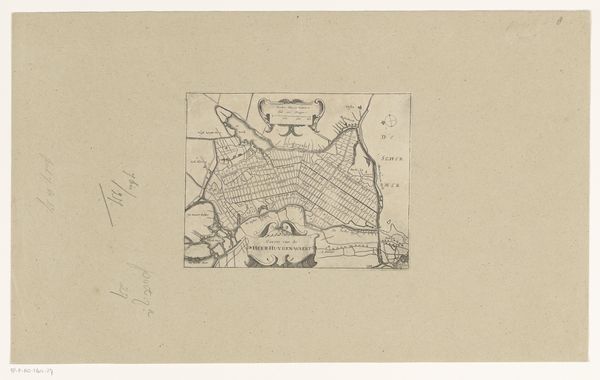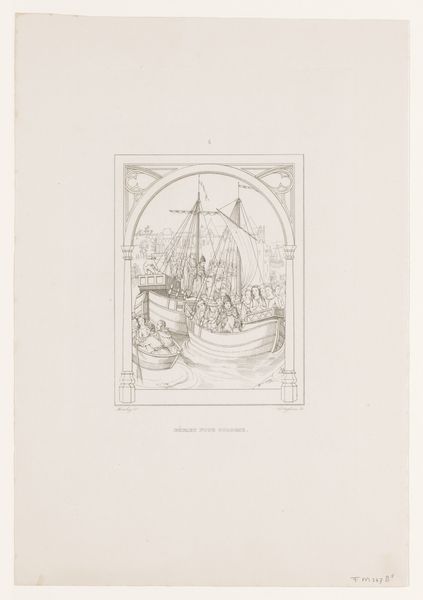
drawing, pencil
#
portrait
#
drawing
#
medieval
#
figuration
#
pencil
#
costume
#
genre-painting
Dimensions: height 215 mm, width 265 mm
Copyright: Rijks Museum: Open Domain
Editor: This pencil drawing from before 1878, titled "Kostuums," is by David van der Kellen and it’s located at the Rijksmuseum. It reminds me of an illustration in a history textbook. It’s monochromatic and shows detailed scenes within what looks like a medieval setting. What elements of the artwork do you find most striking? Curator: Let us consider the linear structure, its deployment across the picture plane. Notice how the artist uses line weight to define form and create a sense of depth, even in this two-dimensional medium. Observe how the architectural elements, such as the arch and the lattice windows, frame and divide the pictorial space. Editor: It does seem like each area is carefully delineated. What do you think about the decision to portray these particular scenes? Curator: We can think about how the artist articulates different narrative spaces within a single composition. Consider the contrast between the domestic intimacy of the bedroom scene and the more public gathering around the table. Notice the recurring shapes—the conical hats, for instance—and how they establish a formal rhythm. Are these elements used to organize space and direct the eye, and how might that impact the meaning we derive? Editor: So, it's less about *what* is happening and more about *how* the artist structures the composition and uses lines to create a visual experience. Curator: Precisely. The success lies in its internal coherence, the formal relationships established through line, form, and composition. A semiotician might add more based on period attire and practices, perhaps even interpreting gestures. Editor: That makes me look at it completely differently. I see a lot more intentionality now! Thanks. Curator: Indeed! Viewing art is not about the narrative or historical references; it involves exploring the artistic tools employed in the artwork's creation. I’m delighted you observed it, too.
Comments
No comments
Be the first to comment and join the conversation on the ultimate creative platform.
